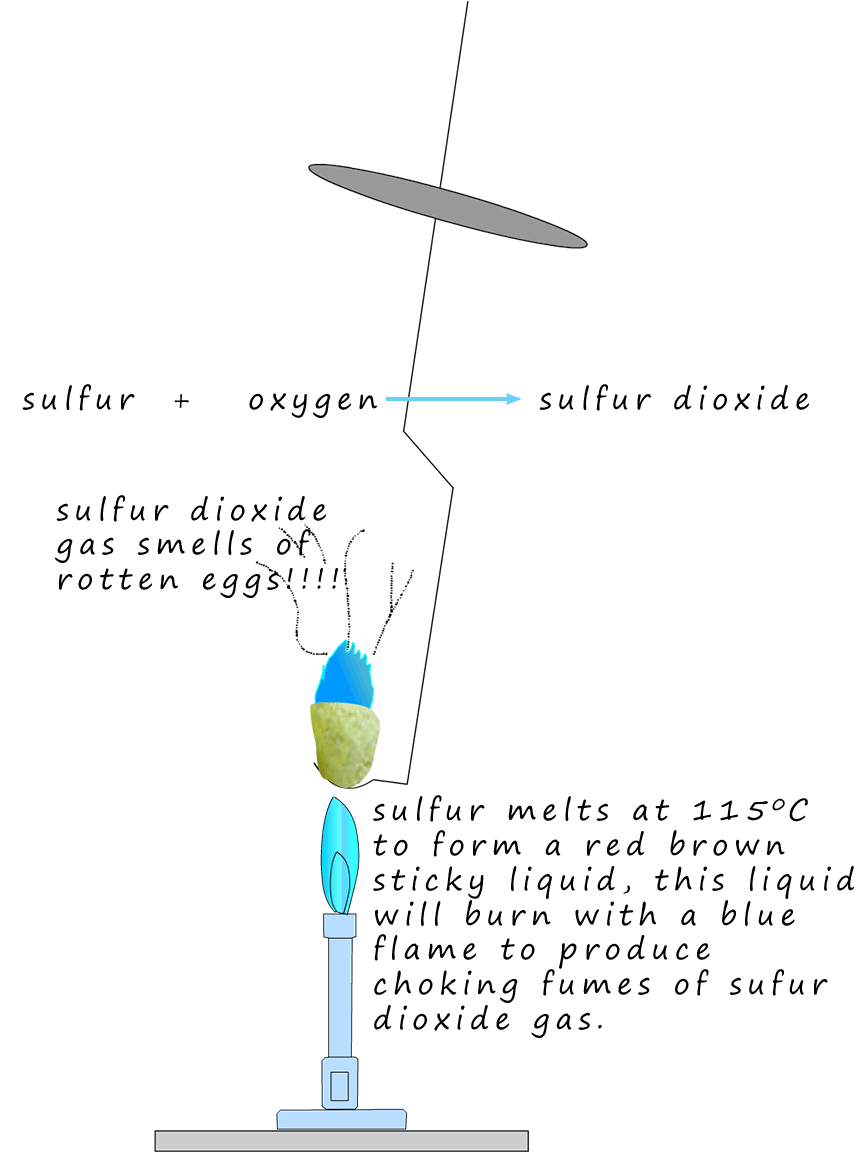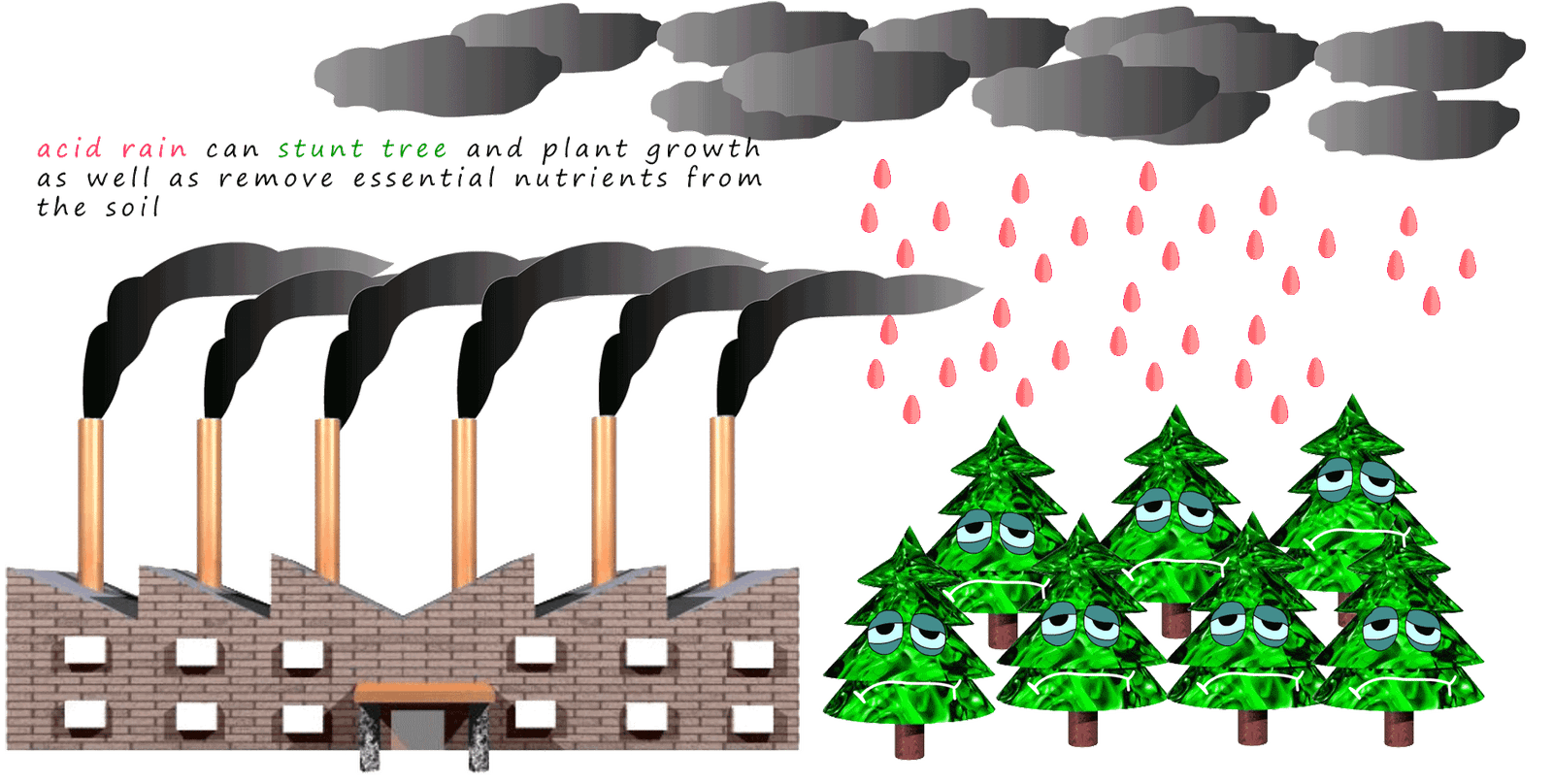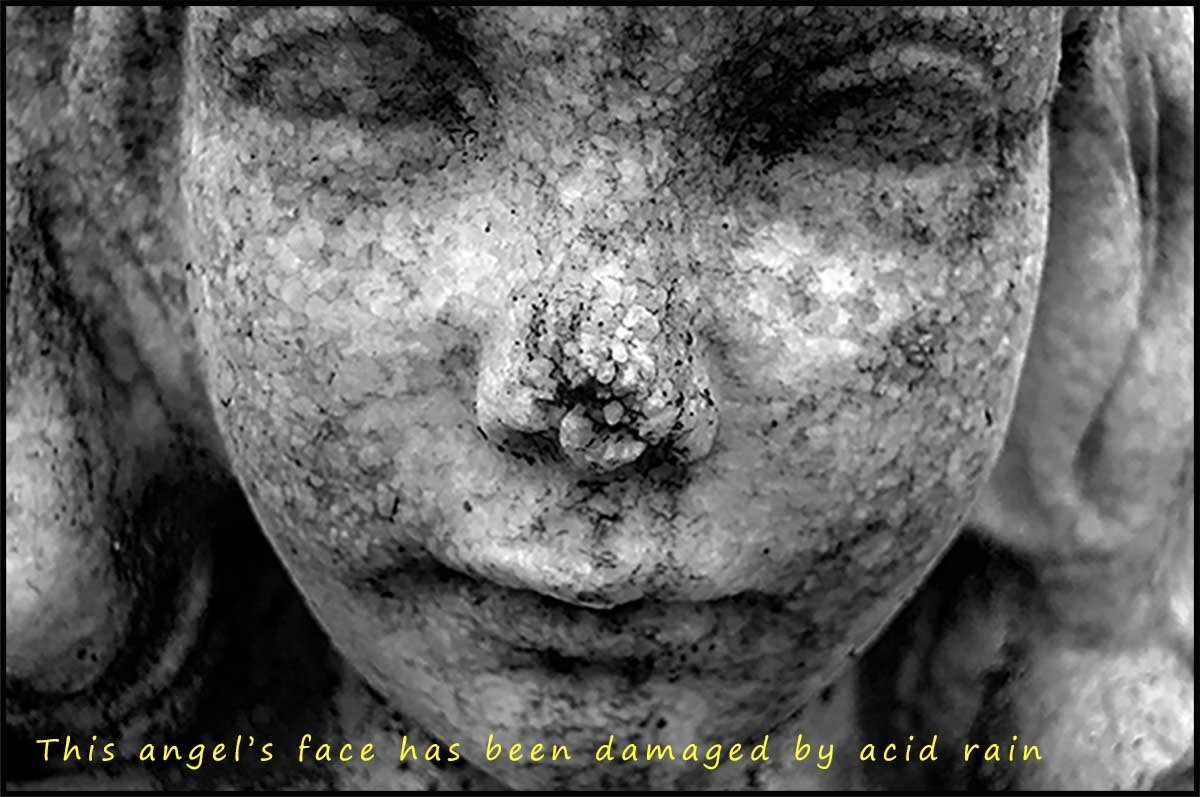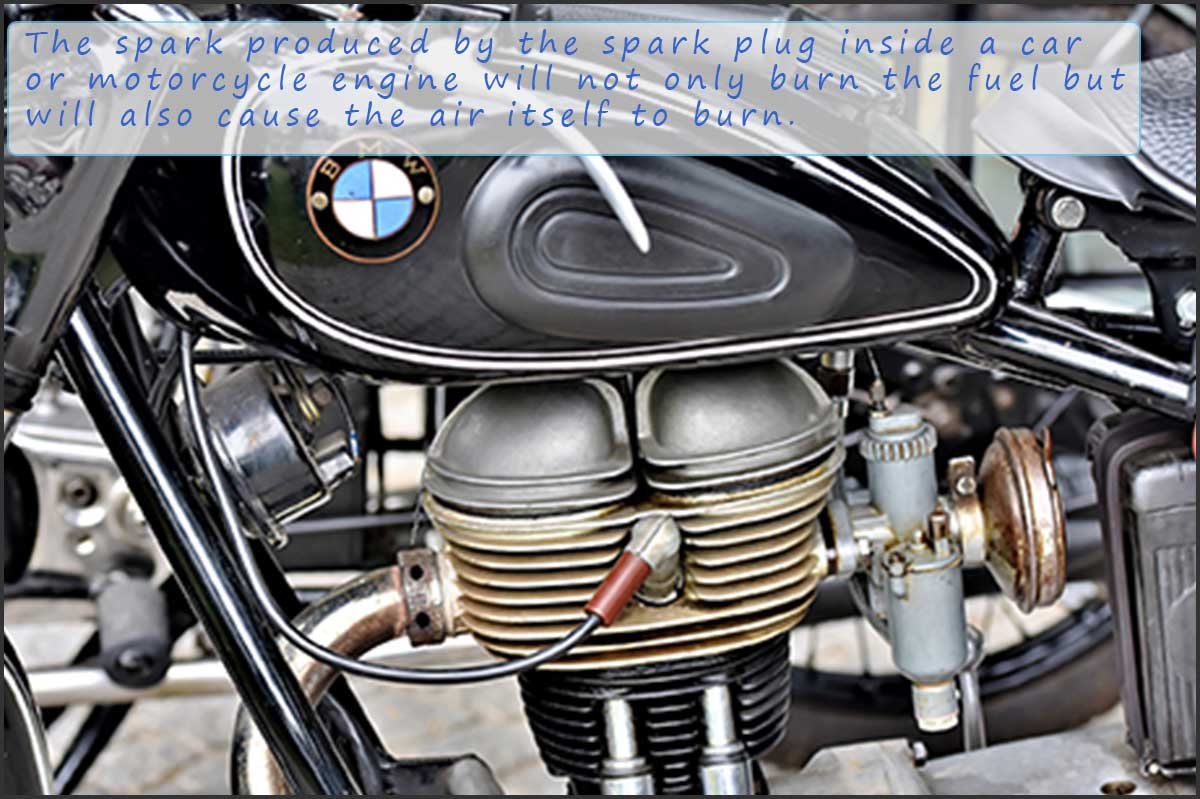

Higher and foundation tiers
Most of the fuels we use today such as petrol, diesel and kerosene (aviation fuel) are all hydrocarbons. Hydrocarbons are compounds containing the elements hydrogen and carbon. The products of combustion of fuels are carbon dioxide gas and water (hydrogen oxide) e.g. the equation for the complete combustion of pentane is:

However fossil fuels such as coal, oil and gas not only contain hydrocarbons but there are many impurities present as well. One of the main impurities is sulfur. Sulfur causes lots of problems when it is burned. Being a non-metal when it burns it obviously forms a non-metal oxide, sulfur dioxide. Non-metal oxides are acidic. This means that they will dissolve in water to form acids, e.g.
A diagram similar to the one below was used in the section on complete and incomplete combustion of fuels. The set-up is slightly modified from the previous one in that a third test-tube has been added. This test-tube contains universal indicator. So when fuels (hydrocarbons) burn they will produce hydrogen oxide (water) which will condense in the first test-tube. Carbon dioxide gas is also produced and this can be detected using the limewater solution in test-tube 2. If the hydrocarbon is contaminated with sulfur then when it burns the acidic gas sulfur dioxide will be produced, this will turn the universal indicator red as shown in test-tube 3

Acid rain will kill aquatic life in ponds, streams, lakes and rivers. The plants and animals are unable to survive in water when the pH begins to drop and the water becomes more acidic. Acid rain will also erode pipe work and stonework on buildings causing long term damage. Many historical building e.g. churches have been very badly affected by erosion caused by acid rain. Acid rain will also damage many natural ecosystems and reduce soil fertility by leaching essential minerals from the soil.

 Limestone, marble and sandstone are common rocks used in building and construction. Limestone and marble are soft and
attractive rocks which are easily carved by stonemasons, so they are often used in statues, monuments and gravestones.
However over many years acid rain can attack these soft rocks and slowly erode them. The writing on gravestones can
become unreadable due to acid rain erosion, statues can become featureless blobs and even stone walls can be eroded by
acid rain.
Limestone, marble and sandstone are common rocks used in building and construction. Limestone and marble are soft and
attractive rocks which are easily carved by stonemasons, so they are often used in statues, monuments and gravestones.
However over many years acid rain can attack these soft rocks and slowly erode them. The writing on gravestones can
become unreadable due to acid rain erosion, statues can become featureless blobs and even stone walls can be eroded by
acid rain.  The air is a mixture mainly of nitrogen (80%) and
oxygen (20%). Nitrogen
is a very unreactive gas; however inside
a car or motorcycle engine the high temperatures and the high voltages
produced by the spark plugs which are designed
to burn the fuel can also cause the air itself to burn.
The nitrogen and oxygen gases
in the air can react to form
various oxides of nitrogen, often called NOx.
The air is a mixture mainly of nitrogen (80%) and
oxygen (20%). Nitrogen
is a very unreactive gas; however inside
a car or motorcycle engine the high temperatures and the high voltages
produced by the spark plugs which are designed
to burn the fuel can also cause the air itself to burn.
The nitrogen and oxygen gases
in the air can react to form
various oxides of nitrogen, often called NOx.
These oxides of
nitrogen are a serious hazard to health and also a contributor to acid rain. One of these oxides of nitrogen is
nitrogen dioxide, which is a very acidic gas and
will dissolve in water to form nitric acid e.g.
When hydrocarbon fuels burn they do not always burn efficiently inside the engine, often incomplete combustion occurs
and the products of this are a mixture of carbon monoxide gas, unburnt fuel and tiny particles of carbon (soot), often called particulates. Some people are worried that these tiny particulate particles can damage your lungs and may even be linked
to some types of cancer.
These tiny particulate particles are particularly worrying for a number of reason, not only do they affect the health of
people adversely but in the upper atmosphere these particulate particles actually reflect away light from the Sun back into
space, this means that less light is actually reaching the surface, scientists estimate that between 5-20% of the light from the Sun is reflected back into space, this means that the days today are dimmer than they were say 50 years ago -
this phenomenon is called global dimming.
Finally the other product of incomplete combustion, carbon monoxide is an odourless, colourless and
tasteless gas that is
very toxic and also difficult to detect. If you are unfortunate enough to breath in carbon monoxide
gas then it binds
strongly to the haemoglobin in your blood and prevents it from carrying vital oxygen around your body. This
can cause serious damage to the cells and tissues in your body and if it is inhaled in large enough volumes
it can cause death. Every year in the UK around 60 people die from carbon monoxide poisoning, many of them
from faulty gas fires and boilers.